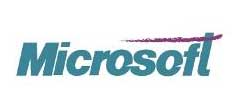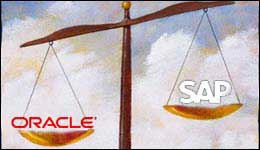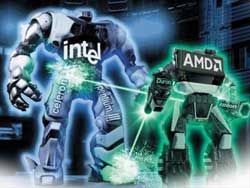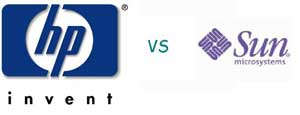In 2005, numerous dramatic battles unfolded among major players in the global IT sector. These battles highlighted the fierce competition in what is considered the most fashionable field today.
Microsoft in a New Trend First, we can mention the “battle” between Microsoft and several formidable competitors, including Yahoo, Skype, and Google. This was a standout event of the year as the giant expressed concerns over Google’s advances in online services, particularly regarding software sold directly on the internet.
First, we can mention the “battle” between Microsoft and several formidable competitors, including Yahoo, Skype, and Google. This was a standout event of the year as the giant expressed concerns over Google’s advances in online services, particularly regarding software sold directly on the internet.
Mr. Bill Gates viewed Google as a “potential threat” to Microsoft. Previously, Microsoft had even sued Google when the latter hired an employee who had previously worked at Microsoft to plan its operations in China. Google’s search engine is used by nearly half of the internet population, and its services are already present on numerous PCs, with future plans for Google software and Google PCs.
The Google brand has become as familiar to internet users as Windows or Microsoft. This conflict represents a new trend in global information technology, as users demand more user-friendly tools for collaborative environments. Microsoft’s upcoming strategic product is Windows Vista.
Oracle and SAP
 Also making headlines is Oracle, engaged in a battle with SAP, the world’s largest business software vendor. Oracle acquired Siebel in a deal worth $5.8 billion. The “acquisition” of Siebel, a CRM (Customer Relationship Management) software company, provided Oracle with an additional 4,000 customers and 3.4 million CRM users, strengthening Oracle’s position in the competition with SAP.
Also making headlines is Oracle, engaged in a battle with SAP, the world’s largest business software vendor. Oracle acquired Siebel in a deal worth $5.8 billion. The “acquisition” of Siebel, a CRM (Customer Relationship Management) software company, provided Oracle with an additional 4,000 customers and 3.4 million CRM users, strengthening Oracle’s position in the competition with SAP.
Recently, Oracle has adopted a strategy to gain more customers by lowering prices and supporting dual-core processors, which are anticipated to be a trend for computers and servers in the coming year…
AMD and Intel: The Processor Manufacturing Technology War
 This battle continues, quietly yet extremely vocally. A significant turning point occurred in June when AMD sued Intel for monopoly practices. This lawsuit spans multiple countries and is ongoing, with the latest developments in Japan. AMD has presented evidence showing that Intel employed “strong” measures to illegitimately oust AMD from the market in order to maintain price dominance, particularly in processor manufacturing. Intel denies AMD’s accusations.
This battle continues, quietly yet extremely vocally. A significant turning point occurred in June when AMD sued Intel for monopoly practices. This lawsuit spans multiple countries and is ongoing, with the latest developments in Japan. AMD has presented evidence showing that Intel employed “strong” measures to illegitimately oust AMD from the market in order to maintain price dominance, particularly in processor manufacturing. Intel denies AMD’s accusations.
In technology, AMD’s processors are currently considered superior in terms of speed and price. AMD is gradually capturing market share from Intel. Many computer manufacturers that previously turned away from AMD are now welcoming them back, including HP and IBM. AMD’s market position is becoming increasingly solid… Meanwhile, Intel is banking heavily on the Yonah processor line in the new year, treating 2005 as a relatively insignificant downturn… Essentially, this is a competition over processor manufacturing technology.
Other Fronts Drawing significant attention is a “paper” battle between HP and SUN. HP claims to have attracted many customers from SUN to switch to HP servers in the Asia-Pacific region. In the telecommunications arena, the Finnish mobile giant Nokia acquired IntelliSync (a developer of email and wireless messaging technology) for $340 million, aiming to compete with Research in Motion (RIM) in the mobile phone sector.
Drawing significant attention is a “paper” battle between HP and SUN. HP claims to have attracted many customers from SUN to switch to HP servers in the Asia-Pacific region. In the telecommunications arena, the Finnish mobile giant Nokia acquired IntelliSync (a developer of email and wireless messaging technology) for $340 million, aiming to compete with Research in Motion (RIM) in the mobile phone sector.
The battles are ongoing. Regardless of which side seems to have the upper hand, the outcome will greatly impact society, as these giants hold the means of current human social movement.


















































